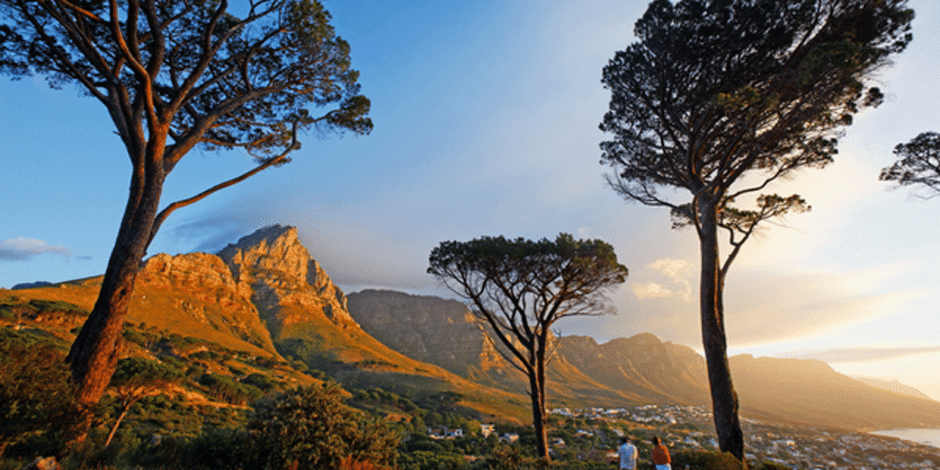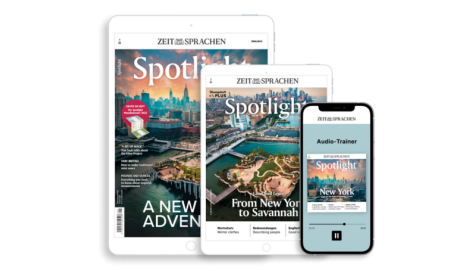Starten Sie den Audio-Text
Mit dem Audio-Player können Sie sich den Text anhören. Darunter finden Sie das Transkript.
Transcript: A round trip from Cape Town
South Africa’s earliest pioneers, the Trekboers, travelled away from the Cape of Good Hope in the 1600s to find grazinghier: Weidelandgrazing for their cattleViehcattle. In each direction they went, the landscape changed dramatically. We’re going to experience these changes in a round trip from Cape Town via the Winelands to the Cederberg, and then along the west coast back to Cape Town.
The trip will connect me to my ancestorVorfahr(in)ancestors
A true product of multicultural South Africa, I have Dutch, British, German-JewishjüdischJewish and San blood. (The San are the oldest indigenouseingeboren, indigenindigenous inhabitants of southern Africa, where they’ve lived for at least 20,000 years.) Some of my ancestors were bitter enemies (the Dutch against the British, the settlers against the San…). That’s hard to imagine today, when, in the end, their offspringNachwuchs, Sprösslingoffspring got married anyway!
Our journey begins in the Mount Nelson Hotel at the foot of Table Mountain. It was built by Sir Donald Currie for the first-class passengers travelling on his Union-Castle shipping line. When it opened in 1899, the Mount Nelson was described as more stylish than a London hotel. Its history, English lawns and rose gardens give today’s guests a taste of colonial life.
The “Pink Lady”
In 1918, the Mount Nelson Hotel was painted pink to celebrate the end of the Great Warder Erste WeltkriegGreat War. In 1925, a grand new entrance was built and palm trees were planted along its Auffahrtdrivewaydriveway for the visit of the Prince of Wales, the future King Edward VIII. Winston Churchill stayed there as a young war correspondent. John Lennon did, too, shortly before his death in 1980, using the name Mr Greenwood. He was said to be very tidy, and to have made his own bed.
I visited the hotel for tea and scone (UK)britisches Teegebäckscones with friends in the 1970s, when we were art students. Luxury wasn’t “cool” in those days but we secretly loved it – and used the hotel’s writing paper, too.
The hotel is close to busy Long Street and the Waterfront harbour area, with their trendy bars and restaurants, and also to the scenic roads leading to the Cape’s beautiful beaches. There are plenty of things to do here. A hike up Table Mountain, maybe? Visit Kirstenbosch National Botanical Garden, or go cage divingTauchen im Schutzkäfigcage diving to watch Haisharksharks? We choose to drive south along Chapman’s Peak to Cape Point, where baboonPavianbaboons try to steal our picnic.
Wherever we go, there’s a sophisticatedgehobensophisticated offer of food. Some restaurants are run by foreigners who fell in love with South Africa, such as French cook Franck Dangereux, who came for the surfing in 1989 and now runs the Foodbarn Restaurant near the Long Beach surfers’ paradise.
We’ll be staying in hotels that offer a particular South African feeling: a design style that to blendmischen, vermengenblends ethnic, eco and modern – with a touch of luxury. Our next stop is in the Winelands.
South African chic in the Cape Winelands
Did you know it was the French who brought wine skills to South Africa? In 1652, the Dutch East India Company set up a base at the Cape of Good Hope to supply Dutch ships with food and water. They needed reliable farmers to provide those supplies. So when French Huguenots, escaping religious persecutionVerfolgungpersecution, arrived in 1688, they were sent to settle in a valley now known as Franschhoek (“French corner”). Their descendantNachkommedescendants continue to bring good wine and food to the area, and it has become South Africa’s “gourmet capital”.
To get there, we drive into the Boland Mountains (part of the Cape Fold Mountains), which run from the Cederberg in the north along the south coast all the way to Port Elizabeth. On the other side of the mountains are the Karoo, 395,000 square kilometres of semi-desertHalbwüstesemi-desert. My ancestors had to cross this “land of great thirst”, as the San called it, to find new lives. One of them, my great-great-grandfather Jan Bantjes, was a leader in the Great Trek, which began in 1835, to find an independent Boer homeland.
I open the window to smell the fragrantduftendfragrant fynbos, the heatherHeidekrautheather that grows throughout the Eastern and Western Cape. This is the Cape Floral Region, home to nearly 20 per cent of Africa’s flora, and one of six recognized floral kingdomFlorenreich, Region mit eigenständiger Florafloral kingdoms in the world. It was chosen for its rich diversity of fynbos, which includes South Africa’s national flower, the king proteaKaproseking protea. In spring (August to September), it comes alive with wild flowers. Tannin from the fynbos gives the streams their tea-brown colour.
And there it is! My first padstal (S. Afr.)von Landwirten betriebener Verkaufsstand direkt an der Straßepadstal (“road stall”). You can’t do a road trip without visiting one. They sell fresh farm produceErzeugnisseproduce, home-made jams and preservesEingemachtespreserves, and other surprises. I bought my first antique from a padstal. South Africa has legendary padstal owners. In isolated areas, this is where travellers and locals meet – and the owner is often the entertainment.



